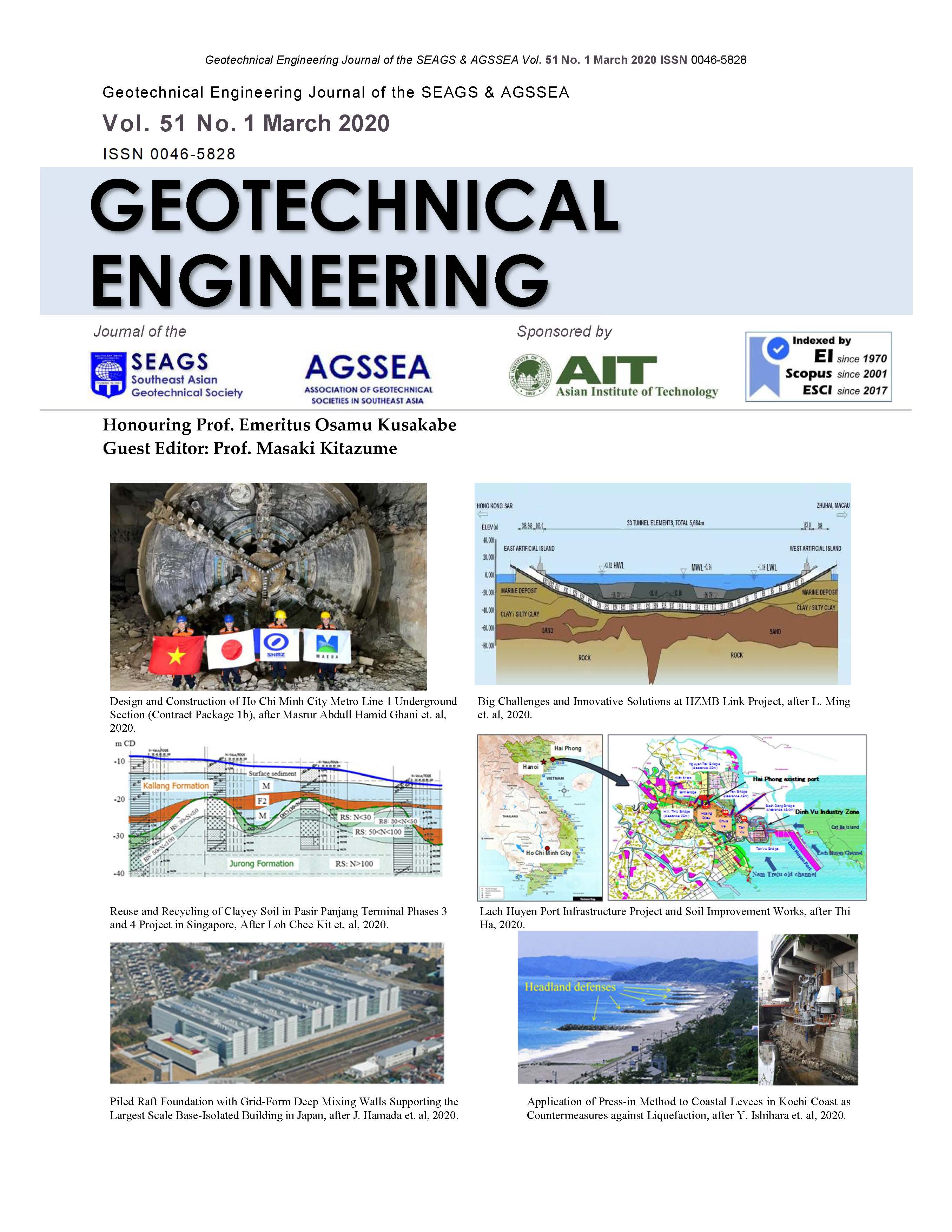Piled Raft Foundation with Grid-form Deep Mixing Walls Supporting the Largest Scale Base-isolated Building in Japan
Main Article Content
Abstract
This paper offers a case history of a piled raft foundation with grid-form deep mixing walls (DMWs) supporting a 10-story base-isolated building of the world’s largest scale, measuring 340 m by 180 m in plan. The DMWs play the role of coping with liquefiable sand as well as of reducing settlement of soft cohesive stratum below the sand. Field monitoring of the settlement and the load sharing was performed for over seven years since the beginning of the construction in order to validate the foundation design. The measured settlement of the raft was 10 mm and the ratio of the load carried by piles to the effective structure load was 0.66 at 72 months after the end of construction. In addition to the long term monitoring, seismic measurements of the foundation were performed after the end of the construction. The incremental strain acts on piles, contact earth pressure between raft and soil or DMWs, water pressure beneath the raft and settlements under ground surface were measured during several earthquakes. These values roughly agreed with the design values. Consequently, it is confirmed that a piled raft combined with DMWs works effectively in liquefiable and soft ground.
Article Details

This work is licensed under a Creative Commons Attribution-NonCommercial-NoDerivatives 4.0 International License.
Copyright © 2019 Association of Geotechnical Societies in Southeast Asia (AGSSEA) - Southeast Asian Geotechnical Society (SEAGS).


